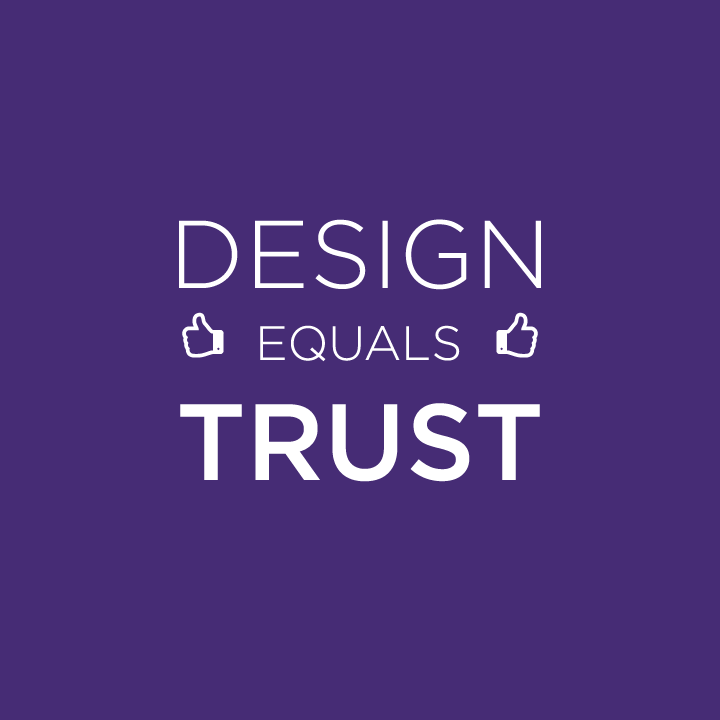
We have asked before why do we think that design is important. Principally, it is because design presents your public image and dictates the perceptions, unconscious or otherwise, that your audience will have of you.
It is more than likely that the first thing that will grab the attention of a potential customer is a website or advert, leaflet or brochure, point-of-sale display or even product packaging. All of these rely on effective, appealing, graphic design.
Based on the scientific research study “Trust and Mistrust of Online Health Sites”, the conclusion is that good website design does have an impact on whether visitors trust your website. In this study reseachers posed the question; “Do different design and information content factors influence trust and mistrust of online health sites?“ and although this is a study of health websites specifically, the resultant findings can be applied to just about any business website.
Of all the factors that were mentioned for rejecting or mistrusting a website, 94% were design related; only 6% were content related. What this means, is that when deciding whether or not they trusted a website, participants mentioned design related issues 15 times more than content related issues.
Some of the design-related reasons participants mistrusted websites:
- Complex, busy layout – Unusual layouts were cited as being less trustworthy. Participants were looking for an easy-to-read and expected layout.
- Boring web design (especially use of colour) – One of the participants had this to say about a mistrusted website, “And one of them I didn’t like the color of. I couldn’t wait to get out it was an insipid green backdrop it just put me off reading it.”
- Pop-up advertisements – Most people find pop-up ads annoying. And this study points out that they also hurt your website’s credibility. If your company relies heavily on being trustworthy (home security, financial institutions, etc.) Avoid pop-ups.
- Slow introductions to the website – Besides being clunky and slow, website intros can make web visitors hit the back button.
- Small print – Content is the lifeblood of your website. It’s what people are looking for. So don’t hide it. Make sure the content on your website is easy to read.
When participants were asked for reasons that they mistrusted websites, design was the most-cited reason. However, when asked for aspects of websites they trusted, content factors were mentioned 83% of the time.
Participants trusted sites with:
- Informative content
- Relevant illustrations
- Wide variety of topics covered
- Unbiased information
- Age-specific information
- Clear, simple language used
- Discussion groups
- Frequently asked questions
This would imply that websites with bad design will be dismissed quickly, even if the content is good. Yet, if the design is good, it goes almost unnoticed, with visitors focusing on the content instead.
Here’s a direct quote from the study:
“The look and feel of the website was clearly important to the participants. Visual appeal, plus design issues relevant to site navigation appeared to exert a strong influence on people’s first impressions of the site. Poor interface design was particularly associated with rapid rejection and mistrust of a website. In cases where the participants did not like some aspect of the design the site was often not explored further than the homepage and was not considered suitable for revisiting at a later date… The main reason that websites were rapidly rejected was due to the design of the interface. Design issues affected first impressions and could lead to the mistrust of a website.”
Conclusion: A good website design matters because it inspires trust – visitors will stay longer on your website.